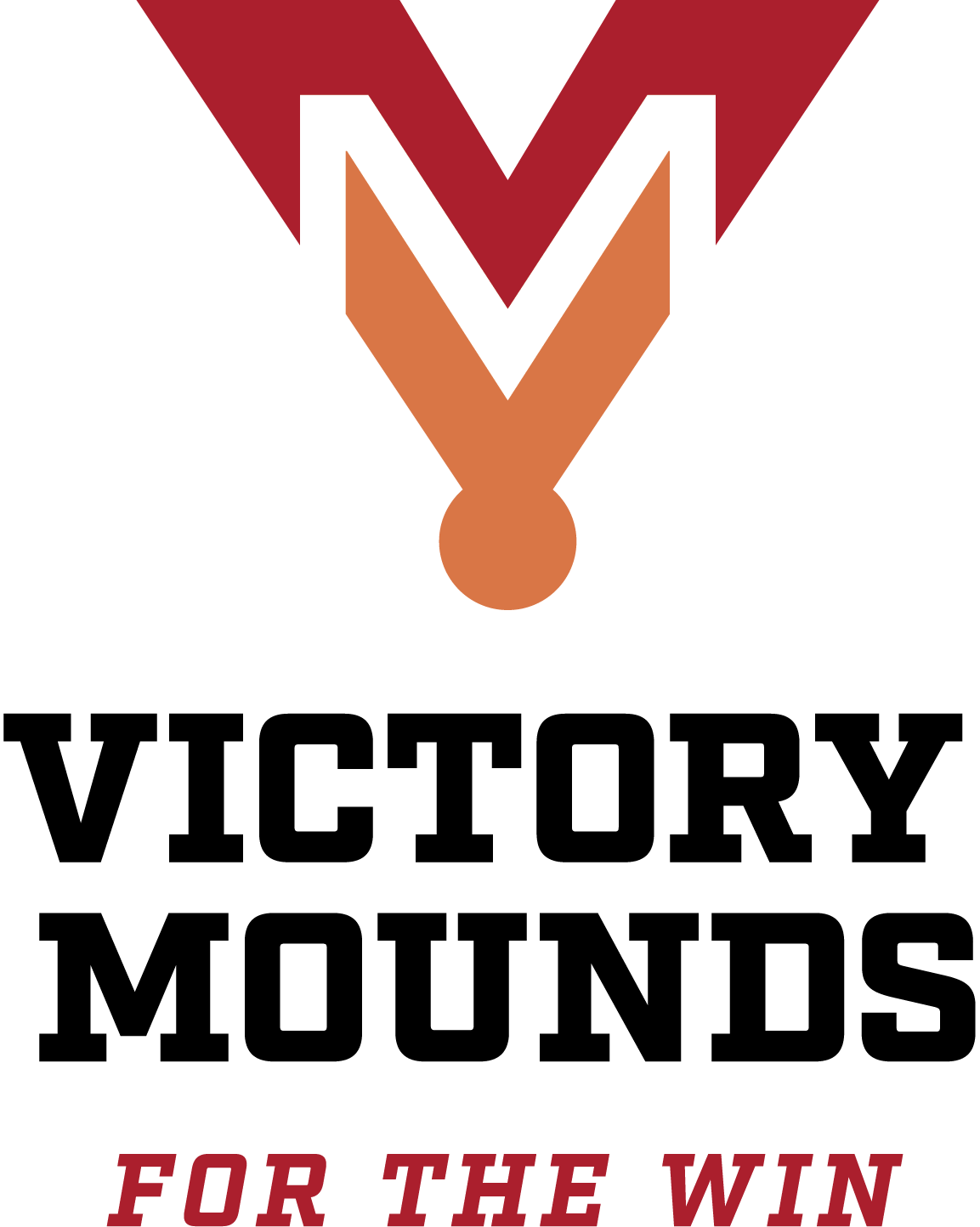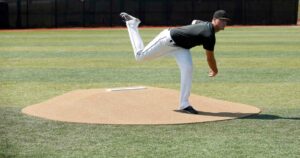To new fans, a typical baseball mound often looks like something that was dreamed up by a madman. The idea of throwing off an elevated platform seems absurd, not to mention the funny round shape, with a rubber slab that the pitcher has to use for every single pitch.
For coaches and players, though, the mound is something of a pivot point. It indicates the starting point for the game, which means that every single play starts with the pitcher.
This gives the game a central focus, but that’s not all the pitching mound does. Having a pristine, well-designed mound is essential to build good practice habits, so that mound has to conform to several important measurements.
At Victory Mounds, we know that the mound is also an essential piece of equipment. We make portable mounds for practice and games, so we know how they’re made, what makes a good mound and which kind of mound you should buy for your team, your league, and your specific needs.
A Brief History of the Pitching Mound
Way back in the day, pitchers weren’t all that important. When baseball was first invented—and we’re talking around 1893 here—their role was basically just to toss the ball toward the hitter, who would then put the ball in play.
Then the game started to get a lot more complex, and the competitions turned fiercer, too. The distance from the mound to home plate back then was a paltry 45 feet, and pitchers started coming up with all kinds of competitive tactics to take advantage of that shorter distance.
To level the playing field, some of the dimensions were standardized. The pitching distance increased, and eventually it was carved in stone at today’s standard measurements of 60 feet, 6 inches, which is a number that every serious fan and player knows by heart.
In addition, a rubber slab was added to make sure that each pitch was delivered from the same place on the mound. And the early pitching boxes that were used in the very beginning were replace by round mounds, which looked odd at first, until they were slowly accepted as part of the game.
It took some time and a few more adjustments, but the height of the mound was also tightened up. Today, there are rigorous mound specs at every level of baseball that are designed to promote both competition and performance.
How Today’s Pitching Mound is Built?
Few people realize what does into building a pitching mound. A typical mound is built using firm and durable clay, and there are actually two types of clay, an infield mix and a harder mound clay that’s designed specifically to meet the performance demands of pitching.
This clay mix is then molded to meet the specifications of the modern mound. The slope is tightened up to four inches, and there are different height levels different distances that have to be adhered to for each league and level.
The Role of Baseball Clay to Meet the Needs of the Pitcher
The main clay that’s used to build the mound is called baseball clay. It’s actually a high-density clay that’s both firm and durable, and it can be shaped and then reshaped to fill in any depressions. This helps keep the surface consistent, and it also helps prevent injuries by ensuring a safe landing area.
That consistency is also tightly regulated by a screening process for the clay itself. It has to be loose enough to give the pitcher an effective landing zone, and rocks have to be eliminated from the mix as well.
It’s a demanding process, and thousands of hours of work go into the formation, testing and verification of this clay.
What Goes Into Professional Baseball Clay?
Normally, baseball clay is composed of three substances—sand, silt and clay. These three elements have to be carefully balanced to create infield clay, so once again there’s a lot of work involved in making them.
There are also specific reasons for doing this that are related to how the game is played. The base paths have to be smooth and even so they’ll hold the cleats of players as they’re running out batted balls.
Field-wise, they’re also important when it comes to ensuring the proper field drainage. If the field doesn’t drain properly, it becomes unplayable after a rain storm, so it’s important to get this part of the mix right, too.
The companies that make these products are very competitive, and they make a variety of different products that go on top of the clay surface to control the level of moisture.
The products go by brand names like Diamond Pro, Turface, and they’re universally recognized by groundskeepers and other professionals who put together and maintain baseball fields.
Mound Clay
At the highest levels, pitching mounds are created from virgin raw clay that gets processed to a fine texture. It’s also moisturized to give it a putty-type consistency that allows it to be shaped into today’s familiar mound while still staying firm and durable.
It is that firmness and durability that makes it possible to build today’s mounds. It also helps stabilize the batter’s boxes on both sides of the plate, which gives hitters the same kind of stability that pitchers require.
How Blocks are Used to Build a Mound?
Now let’s get even more technical. You’d think that groundskeepers just pour out a load of dirt that’s mixed properly to build a mound, but that’s not the case at all.
Instead, a series of clay bricks are used. These Brices are also known as blocks, and specific numbers are used for each level of the mound.
A total of 180 mound bricks are used to build a regulation mound, with 63 going into the top plat form, 36 for the stride area and 81 bricks for the landing area.
Get Your Pitcher a Great Mound From Victory Mounds
The Victory Mounds Baseball Pitcher Solution
At Victory Mounds we’ve been making quality baseball equipment for years, and we have a lot of expertise when it comes to pitching mounds, batting cages, field maintenance, facility issues and so on.
The best way to find out more is to call us at 800 835 9460. We’ll answer your questions, as a few of our own about your program and needs, then recommend a product.
You can also learn more about us by going to VictoryMounds.com, where you can access information about individual products, and if you’d prefer to email, you can contact is at info@victorymounds.com.

